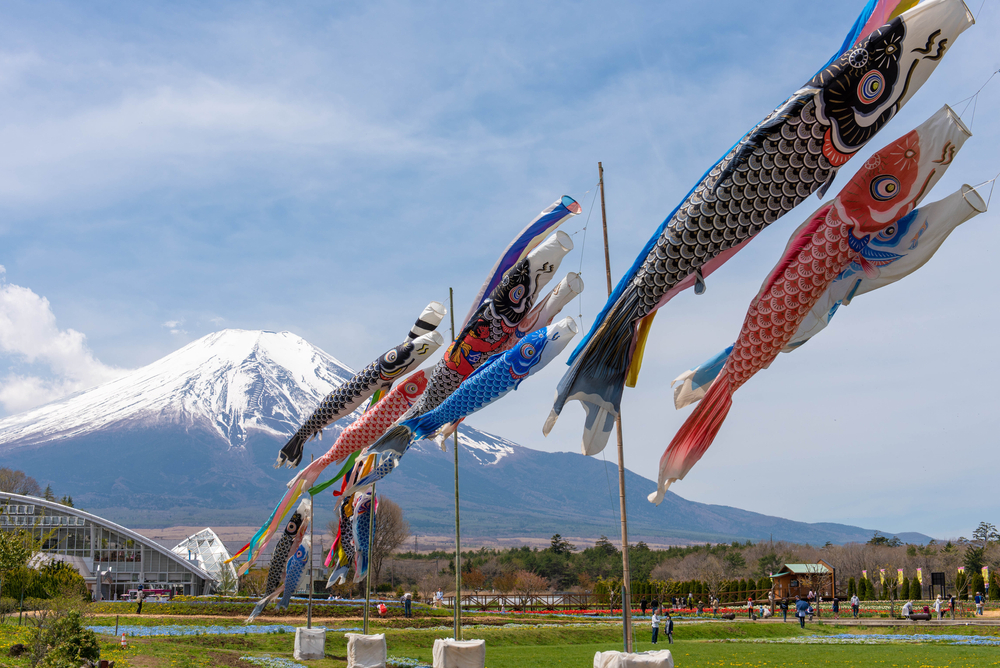
Have you ever heard of the Japanese "Golden Week"? It's considered the longest period of vacation in the country of the rising sun!
Let's explore together what it is about in detail!
How Long Is Japan's Golden Week?
Golden Week (in Japanese: ゴールデンウイーク・Gōruden weeku) is a collection of four National holidays within seven days. These holidays are:
- Shōwa Day or Shōwa no hi on the 29th of April;
- Constitution Memorial Day or Kenpō kinenbi on the 3rd of May;
- Greenery Day or Midori no hi on the 4th of May;
- and finally, Children's Day, Kodomo no hi on the 5th of May.
This period is also called 大型連休 (Ōgata renkyū - おおがたれんきゅう), meaning “long holiday series”.
Why It's Called "Golden" Week?
The name Golden Week was chosen because, during this time in 1951, the film industry and the radio recorded the higher ticket sales and listeners ratings, so it was designed as a Golden Time. This also concerns the travel and tourism industry: flights, trains, and hotels are often fully booked this week. It is surely the perfect time to visit Japan, remember to book it in advance!
Which National Holidays Make Up Golden Week?
Let's have a closer look at the National holidays that make up Golden week:
- April 29th, the birthday of the Shōwa Emperor, called 昭和の日 ・しょうわのひ・Shōwa no hi: this day became a national holiday because the Shōwa era (from 1926 to 1989) is the longest era Japan had. The day the Hirohito emperor was born was picked to commemorate the days of that reign.
- May the 3rd, Constitution Memorial Day; 憲法記念日・けんぽうきねんび・Kenpō kinenbi: the day the new postwar constitution was put into effect, back in 1947.
- May the 4th, Greenery Day; みどりの日・Midori no hi: from 1989 to 2007 the Greenery Day was on the 29th of April, but in 2007 was postponed to the beginning of May. Today, it is dedicated to nature and the environment to commemorate the emperor’s love for plants.
- May the 5th, Children’s Day; 子供の日・こどものひ・Kodomo no hi: it is dedicated to celebrating children’s happiness and characters.
What Are Japanese Habits During Golden Week
Being seven consecutive holidays, Golden Week is the longest vacation period of the year in Japan. Not even New Year vacations or the Obon week are this long. This is why some companies are closed and give their employees time off. Therefore, it is a popular time to travel for many Japanese workers.
Considering that in May the weather of all Japanese islands becomes warmer, it's a perfect time for travel in Japan itself. However, lots of people do go overseas as well.
Other activities the Japanese organize during this week are having a barbecue, going camping, enjoying one or more days in nature, whale watching, or, if you have children, going to famous beaches to calm down.
Golden Week is not a “traditional” festivity, like New Year or the Obon. While there are traditional foods and activities for New Year (お正月・Oshōgatsu) and Buddhist-related ceremonies for Obon, there are no “traditional rules” for the Golden Week.
However, some of the days that became national holidays (like 29th April and 5th May) were already celebrated in ancient times in Japan and were related to religious festivities. That's why you can see 鯉のぼり・こいのぼり・ (koinobori – carp-shaped streamer) raised on the streets and in-store. Note that this decoration refers only to Kodomo no hi! However, it's often confused as being a symbol of Golden Week itself.

Hope you enjoyed the article!
Author: Valeria (graduated from Ca’Foscari University Japanese Studies)
If you want to learn both English and Japanese, check out our content partnership Hiragana Times, the English-Japanese magazine!


